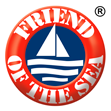Vongole
Cloudy Bay Clams
Species scientific name: Mactra murchisoni, Spisula aequilatera, Paphies donacinia, Dosinia anus
FAO area: 81
Fishing method: Hydraulic dredge
New Zealand – Storm clam, Diamond shell, Deepwater tuatua, Ringed dosina – Hydraulic dredge – FAO 81
Species: Mactra murchisoni, Spisula aequilatera, Paphies donacinia, Dosinia anus
Gear type:Hydraulic dredge
Fishing Area: FAO Area 81 Pacific Southwest
Fishery management: The Ministry of Primary Industry (MPI) manages New Zealand’s fisheries by applying a variety of management measures to ensure that fishing is sustainable. The cornerstone of New Zealand’s fisheries management regime is the quota management system (QMS), which was introduced in 1986 and sets a yearly catch limit (or total allowable catch – TAC) for every fish stock. New Zealand law requires TAC limits for every fish stock to be set at levels that will ensure their long-term sustainability. The QMS manages 100 species in 638 stock areas. Other management controls imposed are closed areas, closed seasons, size limits, gear restrictions and prohibited species.
The QMS has delivered significant benefits – most of the stocks that were overfished before the introduction of the QMS now have sustainable catch limits in place. New Zealand is one of the few countries in the world that has an internationally competitive fishing industry that makes use of a natural resource on a sustainable basis.
Each year there is considerable investment in research and fisheries assessment, a significant portion of which is supported by the commercial fishing industry (2% of annual revenue). All research and assessment is reviewed by expert scientists, with participation by fisheries managers and representatives of environmental and commercial fishing interests.
The MPI invests heavily in monitoring fishing activity and in encouraging and enforcing compliance with the law. Fishery Officers patrol New Zealand’s coastline to ensure all fishers comply with the rules. In addition, Ministry Observers are periodically placed on fishing boats to monitor and record what fishers catch, and any interactions with seabirds, marine mammals or protected corals.
Stock status: The MPI carries out regular stock assessments in collaboration with the Industry members and Universities. The latest stock assessment was published by MPI in February 2016 and it is based on data from 2015. The biomasses of all clam species fished in Cloudy Bay are well above the lower limit of the maximum constant yield.
Habitat impact:The fleet uses hydraulic dredges and their effects on the seabed are continually monitored. A survey conducted in collaboration with the University concluded that the plume resulting from dredging completely disappears after less than thirty minutes. All the dredging activities are carried out on sand and mud seabed with no impact on kelp meadows nor nursery areas.
Discards: The hydraulic dredge allows selecting clams over a certain size so that the discards are low. Bycatch occasionally include sole, plaice and crab but these are either landed as catch or released live at sea.
Approved fishing vessels
CLAM LEGEND, Registration number 63018
STORM CAT, Registration number 132470
CLAM QUEST, Registration number 133577
Vessel’s fla: NZ
Gear Type: Hydraulic dredge
Harbour: Cloudy Bay
Ship owner: CLOUDY BAY MARINE LTD
References:
White, W.L., Millar, R. B., Farrington, G., Breen, D. and Selvaraj, S. (2015). Stock assessment of surf clams from Cloudy Bay, NZ. AUT Institute for Applied Ecology New Zealand Report 15/01
http://www.mpi.govt.nz/law-and-policy/legal-overviews/fisheries/the-health-of-new-zealands-fisheries/
Minh Dang Company LTD
Species scientific name: Paphia undulata
FAO area: 71
Fishing method: Dredge
Vietnam – Dredge – Paphia undulata – FAO 71 (Pacific, Western Central)
Fishery client: MINH DANG CO. LTD, Soc Trang province, Vietnam.
Fishing area: FAO 71, Ba Lua Island, Kien Giang province, Vietnam.
Fishing vessels: Soc Trang fleet.
Vessels audited on site as Soc Trang fleet samples: ST-90299-TS; ST-91449-TS; ST-90848-TS; ST-90747-TS; ST-92269-TS.
Fishing method: Dredge.
Certified species: Scientific name: Paphia undulata;
Common name: Yellow clam.
Management summary
The Ministry of Agriculture and Rural Development (MARD) is the government agency that manages fisheries in Vietnam. The audited species can be caught in Vietnam in compliance with Circle No. 02/2006/TT -BTS issued by MARD and with the Official announcement No. 3397/TS – KHCN of the National Agro-Forestry-Fisheries Quality Assurance Department (NAFIQAD). There is a limited fishing season and a minimum length of 30 mm to be respected.
Stock status summary
Public data states that yellow clam is not overexploited in the fishing area. According to FAO and MARD, stock status and fishing mortality are appropriate. In addition, the audited species is not on the IUCN Red list.
Bycatch / discards
According to the logbook, there is no occurrence of discards because of the mesh size (> 40 mm), which is bigger than the minimum size of the fish to be retained.
Habitat Impact
The harvest season of yellow clam is respected, as well as the catching area established by the Sub-Department of Capture Fisheries and Resource Protection of Kien Giang province, which is 10 nautical miles from the shore on the island of Ba Lua, Kien Luong. There are no records of captured live animals.
Social Accountability performance
The fleet complies with the human rights and Vietnamese regulations.
Conclusion with reasons for approval
The fleet complies with Friend of the Sea requirements, without any major non-conformities.



